INTRODUCTION
As I said, before leaving for Eastern Dirt 14, I decided to ride in modular gear with full MX armour and boots as opposed to a membrane suit with integrated armour and adventure boots. All equipment is listed in the travel gear article.
PROTECTION
Our plan was to ride far away from civilization, sometimes on pretty bad trails. It made sense to beef up the protection and riding with MX armour turned out to be pretty sensible. Some of the trails we rode were pretty technical with long sections on boulders, rocky terrain or rivers. Some sections were strewn with fallen trees and old logs. We took lots of falls on those trails. Sometimes onto sharp rocks, boulders or branch stumps. The added protection of proper MX armor was crucial for us to make it through in one piece. Especially the knee pads and boots took a beating. On the 110 I made a mistake while cruising on a dirt road and crashed. I went clean over the bars and landed hard on to my knee. My right hand side front tank was ripped into two pieces but all I suffered was a small bruise on my knee.
- PHOTO SHOT BY THE WALRUS
HEAT
Staying warm in cold conditions was no problem, as the body armour jacket gave plenty of insulation and the Traverse jacket and Gore-Tex Overpants kept the wind out. During the whole trip, I wore a mid layer fleece under the armour twice. I never did put on the mid layer pants, as the knee guards also provided a lot of insulation and the only exposed parts were basically the thighs. The Sidi Crossfire boots were surprisingly warm even when completely wet after river crossings.
Staying cool was one of the main reasons for me to go with this setup. I knew Mongolia would be hot. I was very comfortable, riding in a Dakar jersey and the Dakar ITB pants. Even with the body armour jacket I had a good breeze going through the mesh, all the way to the base layer, and keeping me cool. No integrated membrane suit will come close, no matter how well they are ventilated.
COMFORT
I originally thought that the armour jacket would be the most irritating piece of gear. I was surprised how quickly I adjusted to it and didn’t really notice it after a while. Same goes with the knee pads. I didn’t even notice them after a while. The Crossfires are comfortable as MX boots go. I didn’t even bother taking them off in camp most evenings. Juha was worried that I would get trench foot.
The biggest issue was losing range of motion when riding in full rain gear. The jacket was fine, but wearing Overpants over the Dakar ITB pants restricted movement. This was of course only an issue while getting on or off the bike. Once on the bike and moving, they were comfortable. Retrospectively I should have added suspenders to the overpants to avoid having to pull them up after every time I stood up on the pegs. Juha had suspenders and experienced no issues with the pants sagging.
WATER
None of my previous membrane suits had actually been waterproof, but the Klim Gore-Tex gear actually worked. Riding dry in the rain was a whole new experience. After being drenched they dried up quickly. I usually rode another fifteen minutes after rain, before taking off the Overpants and stowing them. At that point they were usually completely dry. As there was no integrated armor and everything came off in separate layers, drying the Traverse jacket, Dakar ITB pants as well as knee and body armour was much quicker than with an integrated suit.
The biggest dilemma in changeable weather was whether to put on the overpants or not. It was always a gamble between lost time and comfort versus risking getting wet. Another factor in the equation was also the quantity of rain. If it was just a drizzle I didn’t bother donning the overpants. I think it’s safe to say I really liked riding in just the Dakar ITB pants. Not so much with the Overpants, so I would always take them off as soon as possible. This resulted in either lost time or getting drenched, especially with sporadic rain. Juha on the other hand didn’t seem to mind the Overpants as much as me.
The MX boots were of course not waterproof. Some riders swear by Gore-Tex boots, but if the water level is going to be above the top of the boot, it won’t matter. When the boot is full of water, the membrane will only slow down the boot from emptying and drying.
CONCLUSIONS
I guess the question that needs to be answered in this case is whether I would ride Eastern Dirt 14 all over again in the same gear. The answer is yes, except that I would leave some of the mid layers behind. Especially the mid layer pants are really impractical to put on with the modular setup. Instead, a pair of powerstretch fleece shorts might have been a better idea, provided they could be put on without removing boots and knee pads.
Having said that, I think the modular setup is best suited for technical trails where the extra protection is necessary. Places where taking a fall will land you on something that wants to hurt you. If I was to mostly ride flat terrain or gravel roads, I would probably consider riding in an integrated membrane suit like The Klim Adventure Rally or Badlands Pro series.
Another thing to take into consideration is climate. The modular setup is at its best in hot conditions. If it will most likely be cold and wet, an integrated membrane suit will probably be a better choice.
Which one would you ride in?

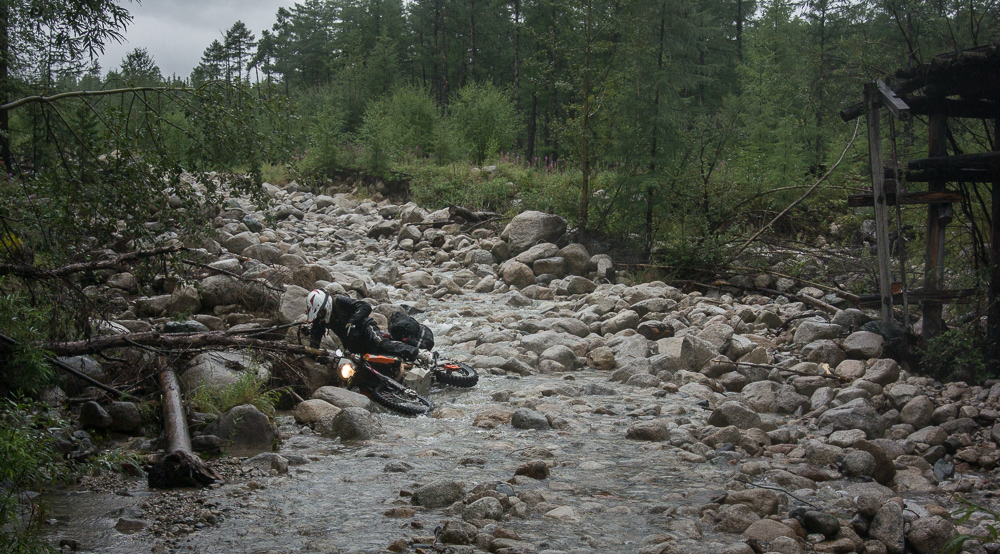
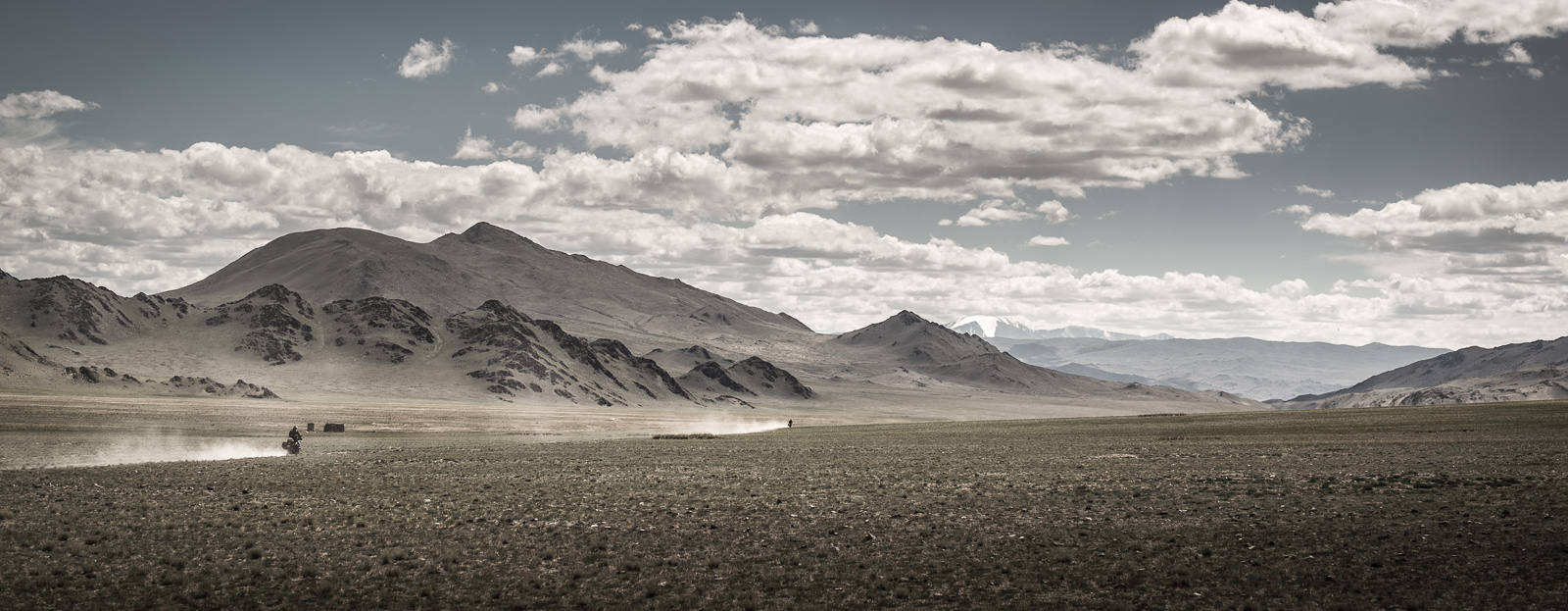
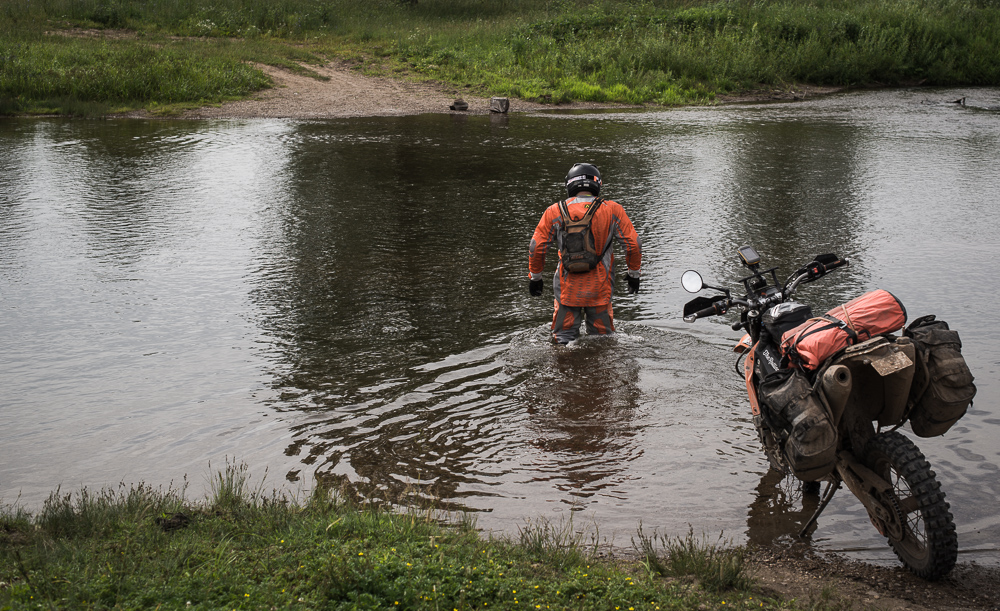
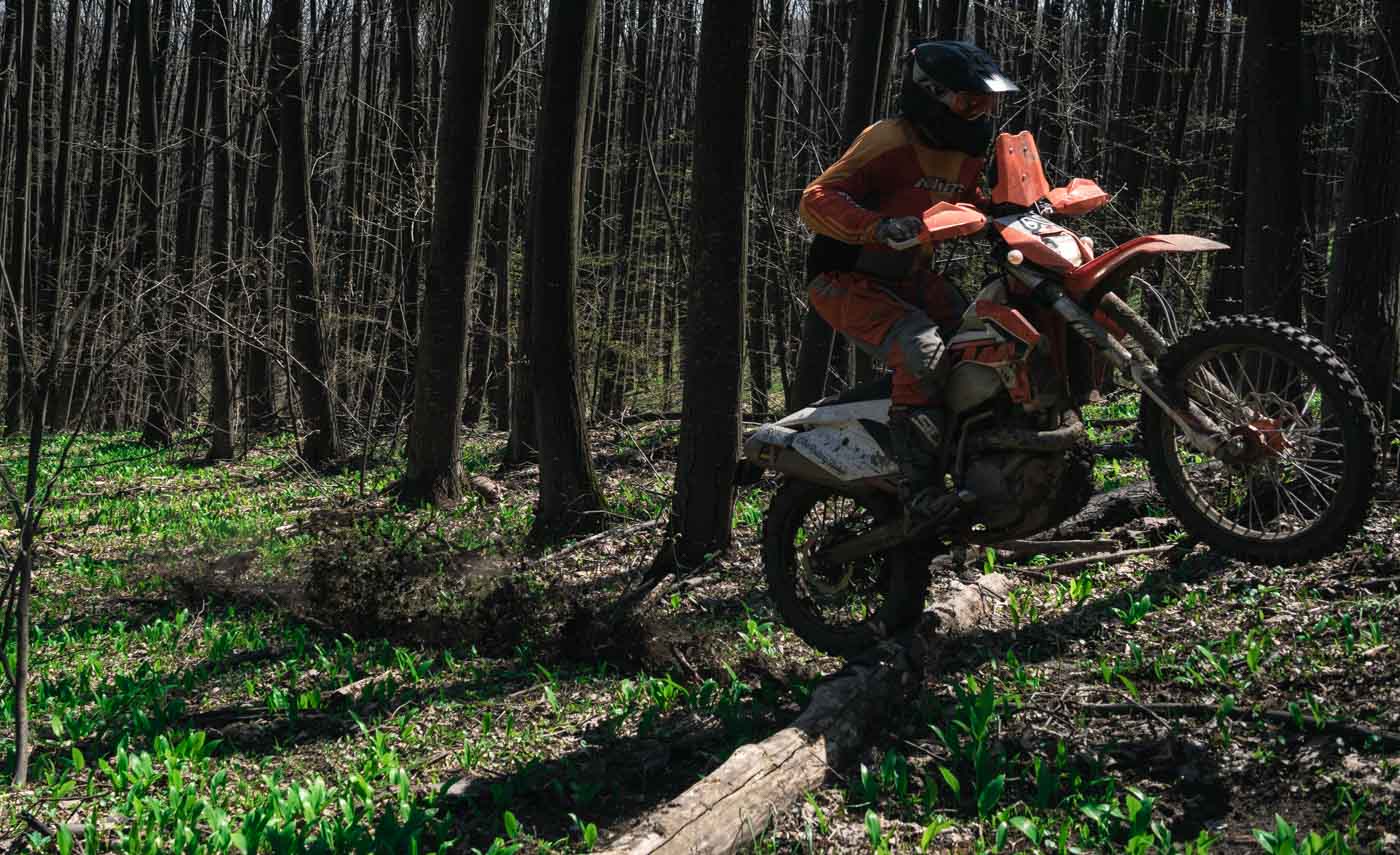

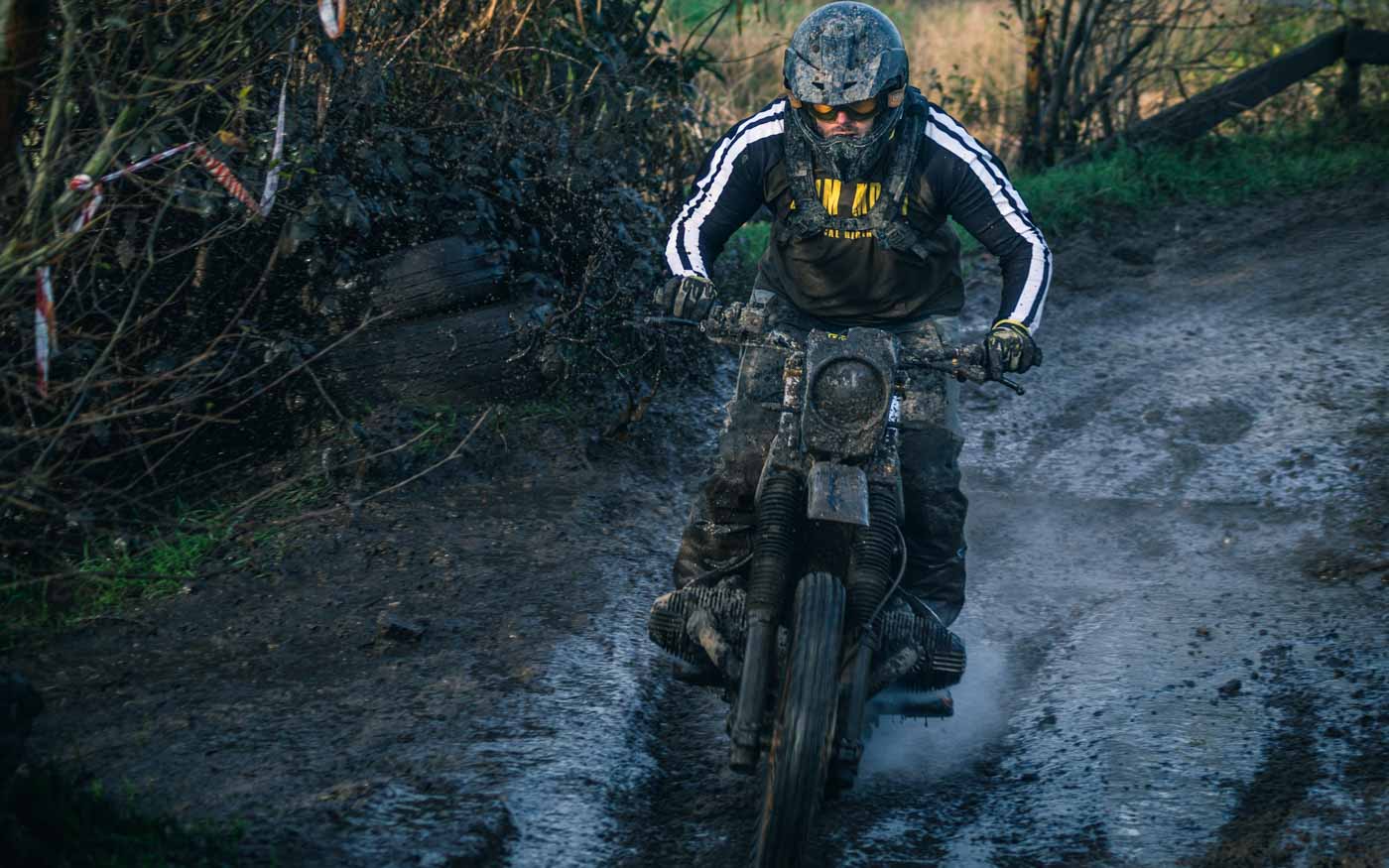
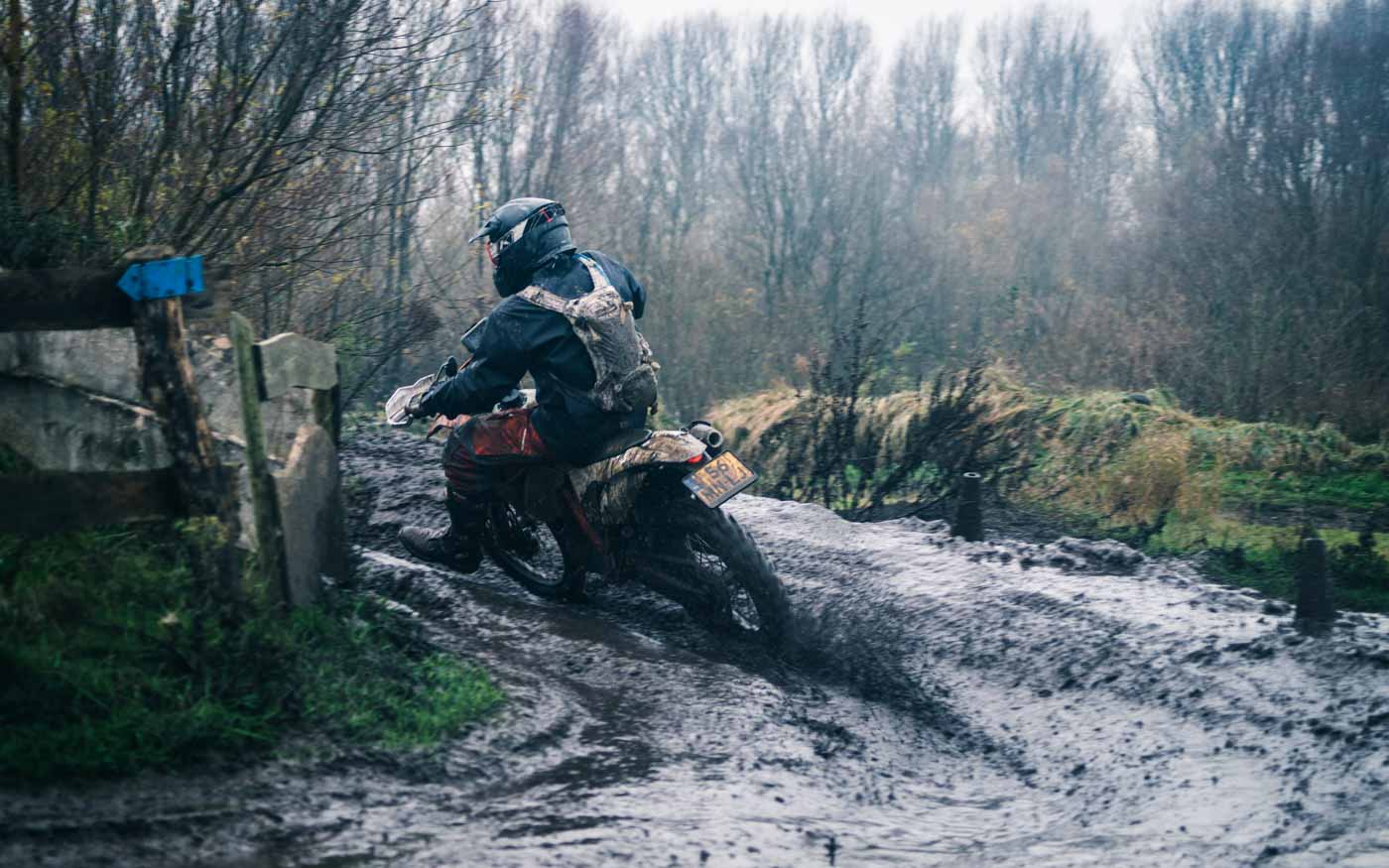
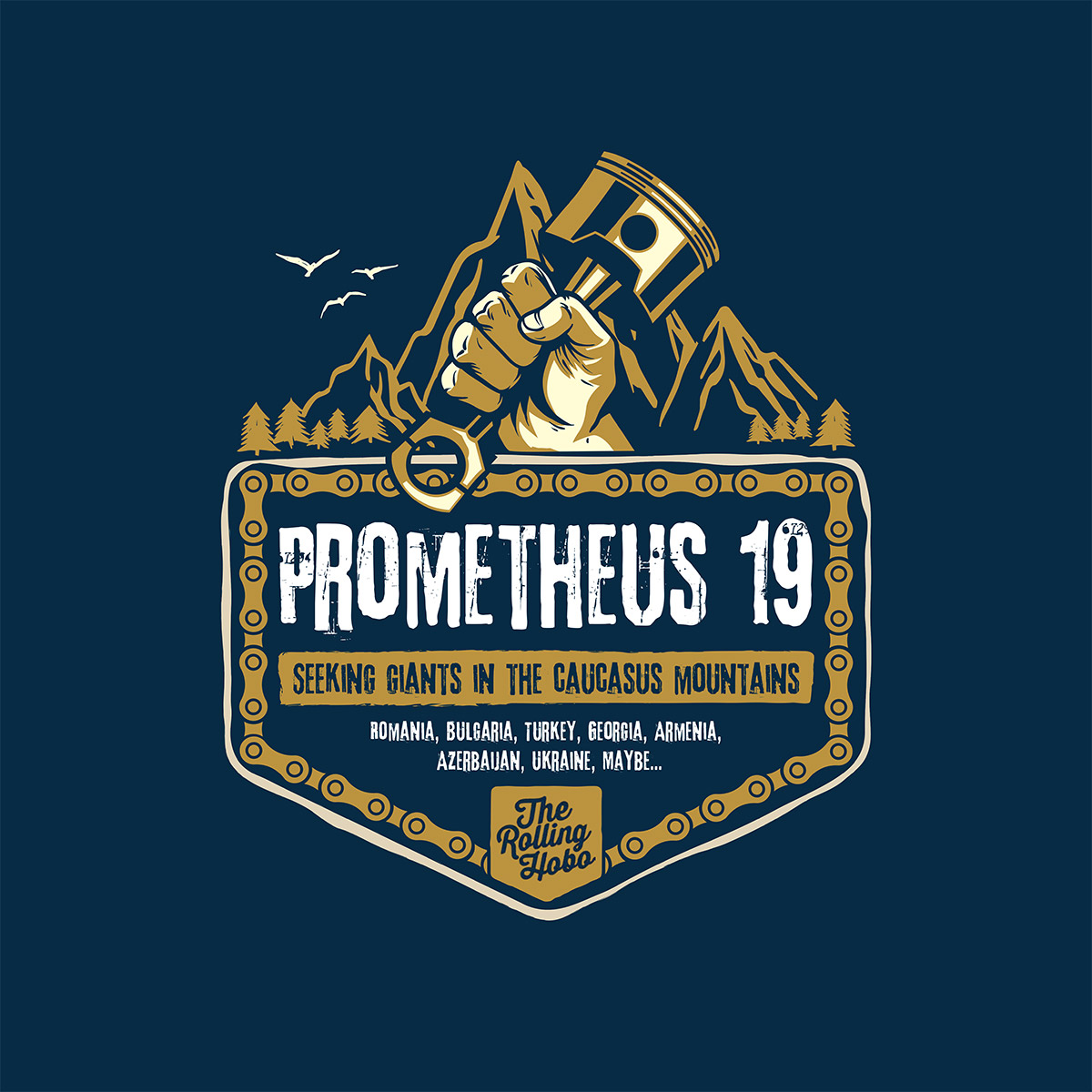
Great summary. Really enjoy browsing trough your webpage. But I would like suggest one thing to be added to your list; Did you ever consider Goretex socks? Klim hast them in their catalogue. You get the benefit of wearing a good protective boot like your crossfire, but your feet will stay dry.
Considering of what you are doing, what are your thoughts on the Rally Air Suit from Klim?
Regards
Marc
Hi Marc, thanks for your input. I normally wear similar socks (Sealskins) for winter mountain biking. I was thinking about taking them along to SIberia, but I knew I would be scouting deep crossings, up to my waist. So any socks, no matter how high, would have been flooded and been useless. So I decided to go without and rely on the boots drying up. It was pretty warm and the Crossfires dry fast so it was not a problem. In winter it would have been a totally different game.
As for the Rally Air, I think it’s probably a good option if you don’t want to ride in modular armour and it will be dry. Getting the rain gear on and off gets really irritating pretty quickly. Personally, I would probably rather go for the Rally suit, if I was to ride in integrated armour. It has plenty of ventilation, and you have the same protection and will never have to deal with changing into rain gear and carrying it. I guess for extremely hot conditions the Rally suit may be too hot and the Rally Air be the best choice.
Hei!
I’m a fan of modular setup as well.
I noticed that you used Thor Knee Guards.
What are your expierences after the Eastern Dirt, espescially in combination with the Dakar Pant.
Whilst riding, do they slip or open up? Would you recommend them for that kind of riding?
Thanks
Chris
Hi Chris,
The Thor’s were very comfortable with the Dakar ITB’s. The fit was just right for me. No sagging in the knees, and no limitation in range of motion either. I guess this is of course a combination of pad and rider leg/knee size.
The knee guards didn’t move at all. In fact I took off the small horizontal straps, using only the velcro/spandex fasteners. It was to avoid skin abrasion. Also, setting up the velcros needed some care so that the hook side didn’t dig into my skin. I don’t think they really can open up, as they are wedged in the boot and the velcro fasteners are held against each other by the pants.
I rode with them every day. My buddy was riding with some extremely expensive carbon fibre bionic knee guards and had to take them off due to abrasion that was in risk of getting inflamed. I took a bunch of tumbles on rocks and boulders without incident, so I guess they did exactly what they were supposed to. They also dried pretty quickly and didn’t end up smelling too bad.
So the bottom line is that I was happy with them and would wear them again for similar stuff. This is of course due to the fact that they fit me very well, which I think is a crucial issue.
I hope this helps. Happy trails!
[…] I prefer a modular setup, instead of riding in an integrated suit. However it does present a challenge for the minimalist, as over a half of the gear will most likely sit in the luggage for long periods of time. Namely the rain gear, mid layer and extra gloves. Riding in an integrated GoreTex suit, such as the Klim Badlands, negates the necessity for rain gear so there is less to pack. But the extra protection of the modular setup and the fact that there is nothing better than riding in full MX attire on hot days makes me stick to my guns. […]
I have been already seriously thinking of going with the Dakar ITB versus the Dakar OTB pants I have been using. They extra fabric outside of the boots makes using any kind of wet weather overpants that much more uncomfortable and restricting., for me. I think hearing your experience also is convincing me to do it. I have started by looking for anyone who wants to do a trade.
I am totally modular too. I use a Dakar Pro jersey, with a Leat 5.5 Pro HD protector over that, (and an Atlas Air neck brace), seperate Leatt 3DF elbow guards, and I have a Klim Overland. I do also carry a heated liner that can go under all of this.
I use Forma Terrain TX boots with the enduro soles (great double hinge boot for the money) and Leatt Dual Axis knee guards.
I do bring Sealskin socks, but only wear them with big rain days, otherwise I use straight up merino wool.
I really enjoy your blog and your ride reports. And am very excited about your change to a 500 EXC. I ride a 400 EXC and am absolutely loving it.
[…] I’m an advocate of riding light in modular gear, the Forecast shell gloves make a lot of sense to me. I usually run the Klim Dakar Pro Gloves, […]
I was wondering why you didn’t skip the Dakar pants and just used the Traverse over your under layers and knee braces. They have vents to open when it’s warm and you close them up to keep the cold and rain out. No need to put on or off, seems like a more practical solution to me.
I was thinking of that setup, am I missing anything here?
Great write up.
Hi Guillaume, thanks for bringing it up, it’s a good question. However, I feel that there’s no right or wrong gear selection and the setup boils down to personal preferences and what works each unique rider.
Most of my riding is in warm weather, where staying as cool as possible is key. I find membrane pants pretty warm and suffocating in very hot weather. A big contributing factor is breathability, and I find Gore-Tex pants too constricted in terms of air flow through the fabric. The Dakar’s breathe very well through the non-membrane fabric and also have excellent vents. I’ve seen riders hanging around with their membrane pants around their ankles on breaks, and not even after technical riding when you’d be pumped from the exertion. ITB pants also allow boots to dry quicker after getting them wet while scouting water crossings etc. OTB pants block air flow onto the boots, making them stay wet longer.
ITB pants are just a more snug package. They’re better in keeping the kneepads immobile and where they’re supposed to be, which is crucial in crashes. OTB pants tend to be looser, as there needs to be more fabric to allow the pant leg move up and down over the boot between seated and attack position. ITB pants also give better body mobility due to same reason. They’re tucked into the boot, so nothing needs to move between positions. This is especially true when the pants are wet i.e. heavier. Also, I don’t like the pant legs flapping around and they carry a risk of getting caught on things. I’ve managed to get the pant leg of OTB’s caught on a peg, coming off the bike, resulting in a painful unexpected tumble. Actually it was probably my ego that was mostly bruised in that one 🙂
Rainy days are indeed a hassle with my modular setup. It seems that whenever I think it’s just going to be a drop or two and not put on the rain pants, it’ll be a downpour. Or If I put them on, it’ll be sunshine in ten minutes. With the Traverse pants you need to do nothing, rain or shine, but c’est la vie… Another upside with Traverse pants is that they’re probably less restrictive on mobility, compared to the ITB and over pants configuration on rainy days.
So that’s the reasoning behind my decision to run with a modular setup. So far, after three seasons, I’ve been really happy with it, and will continue running in the same setup. In a perfect world, I’d like short rain pants that only reach and connect to the top of the boots, for added mobility and less weight.
As I said, I don’t think there’s a right or wrong and what works for you works for you.
I also have a pair of Klim Dakar pants (the OTB version). I’ve been wearing those on more than 70 000km over more or less 25 countries. I love those pants, but like you I’ve been playing the rain/sun game where putting them on and off becomes really annoying. So, and in spirit with my question, I decided to go with a dedicated membrane pants and ordered some overland pants from Klim (they recently got on special) for my next big trip, the Trans-America-Trail, ditching the D30 in the knees and using my own strap-on knee protection. Well, even though I feel they are an awesome piece of gear, I’m going to return them. The Klim Dakar pants with their stretch panel and breathable fabrics are just too comfortable for me to switch. I feel like the agility the Dakar pants provide is more important to me than the pain of putting rain pants on and off a few times per week.
All this to say that, not only do I understand what you’re saying, but I am also of the same opinion now.
Thank you for sharing your experience.
Hi Guillaume, and congrats on hitting the TAT! I don’t think you can go wrong with the Dakar’s and Forecast rain gear on warm rides. Keep rolling, keep safe!
I find that no matter what I do, the Thor knee protectors always dig into my skin with the Velcro. I’m thinking of using them over the pants instead of inside.
I know that this won’t keep them in place as well, but they are pretty well stuck inside the boots.
Any opinions?
If you mean the wide elastic piece that goes around the thigh, I know what you mean. The cure for me was always riding in base layer pants. Thigh high MX socks should do the trick too. AT least for me it worked…